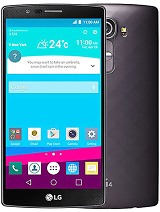GSMArena smartphone buyer's guide: July 2015
July 2015

€400-€500
This chapter will be short but sweet with only two phablets that made the cut, just like the last time.
The Meizu MX4 Pro boasts a 5.5" IPS screen that's actually above QHD resolution. It has borrowed the Exynos 5 Octa chipset from the Galaxy Alpha and the 20.7MP/2160p camera from the Xperia Z series (and adds a 5MP/1080p selfie camera). Then Meizu adds a fingerprint sensor, no swiping needed here.
It sounds great so far, but the Flyme OS (based on KitKat) may not be to everyone's taste. The bigger problem is the storage though, no expansion and only 16GB as base.
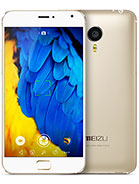
Meizu MX4 Pro |
Pros |
Cons |
|
|
|
| Review |
The Note 4 may be cool, but it's still pricy compared to the Samsung Galaxy Note 3, which is our entry in this price bracket. The 5.7" 1080p screen still looks quite good, the S Pen stylus works great and the 13MP camera records 2160p video. Add an attractive (if metal-free) design and you may be tempted to save the €100 or so premium you need to pay for its successor. Keep in mind that stock is running out, replaced by the slightly different Galaxy Note 3 Neo, so if you like it, you should get it like yesterday.

Samsung Galaxy Note 3 |
Pros |
Cons |
|
|
|
| Review |
The Sony Xperia Z3 technically falls into this price category too, though honestly we can't find enough improvement over the Xperia Z2 to justify the sizeable price gap.
Over €500
This is where things get really serious and making compromises is absolutely unacceptable. Spending so much cash on a phone means you have to get the best of everything.
The €500 LG G4 is subtly curved - not as much as the Flex and not flexible either - and has a 5.5" screen of higher resolution, QHD. The optional leather back with decorative stitching makes for a rather unique look, a welcome alternative to the metal and glass of other flagships. We only worry about the leather's durability.
Anyway, the camera department is highly impressive, a 16MP sensor with optical stabilization and a wide f/1.8 aperture. It lets in 80% more light compared to the G3. And with manual controls plus RAW capture mode, LG makes a serious claim for one of the best smartphone cameras around. The selfie camera is great too, an 8MP/1080p shooter.
The single comparatively weak area is the chipset - the Snapdragon 808 has only two powerful Cortex-A57 cores to back the four low-power A53s. Worse, the Adreno 418 GPU will be under lots of pressure by the QHD resolution of the screen. LG moved to an IPS Quantum panel for improved color rendering and contrast over the G3. You get a removable battery and a microSD slot.
The Galaxy S6 is a reset of Samsung's usual design with a glass frame and the Galaxy S6 edge is one of the best-looking devices on the market. It's price has dropped by some €100 since May and now you can have it for about €540.
But let's start with the base Samsung Galaxy S6, whose price tag is easier to swallow. The 5.1" Super AMOLED screen of QHD resolution is the highest quality display yet (beating even the Note 4) and Samsung went a long way to spruce up TouchWiz.
The 16MP camera with OIS and 2160p video flexed its muscles in our four-way shootout, beating its sibling Galaxy devices. The no-swipe fingerprint sensor also works better than Samsung's previous attempts, but in a controversial move the company sealed the battery and dropped the microSD card slot. The waterproofing of the Galaxy S5 is gone too.

Samsung Galaxy S6 |
Pros |
Cons |
|
|
|
| Review |
The Samsung Galaxy Note 4's highlight is the 5.7" QHD Super AMOLED screen, surrounded by a metal frame. The Note 4 houses an S Pen stylus to boost the proprietary multitasking features.
The Note 4 offers great hardware under the hood, while the OIS-enabled 16MP camera turned out excellent in every key aspect. The selfie resolution is below average at 3.7MP, but we can live with that. A fingerprint sensor is on board too.
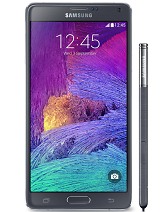
Samsung Galaxy Note 4 |
Pros |
Cons |
|
||
| Review |
Last time around we passed on the YotaPhone 2 but we just can't ignore it now. Its price drop and expanded availability, plus the launch of a white flavor makes it very attractive. The front 5" AMOLED screen is great as is the rear 4.7" always-on e-ink display. We've played with this combo and we like it very much.
The YotaPhone 2 is slightly behind the current flagship specs but the Snapdragon 801 chip will nevertheless deliver blazing-fast performance on a 1080p display. Plus, we found the 8MP camera among the best in its class.
The YotaPhone was recently updated to Android Lollipop and the one of a kind dual-screen concept justifies the steep price.
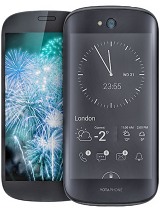
YotaPhone 2 |
Pros |
Cons |
|
||
| Review |
Unlike Samsung, HTC kept its traditional design that goes back to the HTC One from 2013. It tweaked the design with a two-color-tone look and we were always fans of metal unibody phones.
HTC also recognized that the camera is an issue and grabbed a 20.7MP sensor capable of 2160p video. We were glad to see UltraPixel go (at least get moved to selfie camera duties), but the new shooter doesn't live up to Galaxy S6 or iPhone 6 standards.
Anyway, the stereo speakers on the front are better than what either Sony or Motorola have to offer and the audio quality with headphones plugged in is perfect. The 5" 1080p screen is behind on resolution and is surrounded by chunky bezels.
The Snapdragon 810 chipset in the HTC One M9 got some negative coverage due to overheating concerns and while it does run hotter than the Galaxy S6 (which also warms up), it doesn't become an issue unless you really push the chipset beyond its limit. Again, the One M9 and Galaxy S6 rivalry is too turbulent to summarize so you can get the full picture in our head-to-head article.
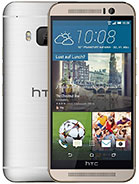
HTC One M9 |
Pros |
Cons |
|
|
|
| Review |
Finally, we are wrapping up with the Samsung Galaxy S6 edge. It's the prettier S6 sibling and its unique design is bound to draw the envy of even iPhone users. The screen's sides are not as curved as on the Galaxy Note Edge, but they are symmetrical, which looks better.
Everything else in the hardware department is the same as the flat-screened S6, but the Galaxy S6 edge has some additional software features. A night clock, various notifications and some gestures use the curved screen and add some neat functionality though we wouldn't call it vital.
Samsung normally exacts a €100 premium on the S6 edge over the S6 with the same storage, but the Galaxy S6 prices seem to be falling faster. In many regions the Galaxy S6 edge is available only in 64GB and 128GB (skipping the 32GB option) without an additional price hike over a 32GB Galaxy S6, which evens out the price a bit.

Samsung Galaxy S6 edge |
Pros |
Cons |
|
|
|
| Review |
You've probably noticed the iPhone's are missing in this chapter and the reason is very simple - Apple will be announcing its next iPhone generation in about 8 weeks from now and we just can't justify a purchase of the iPhone 6 or 6 Plus a few weeks before their price goes down €100 or more. Opting now for an iOS phone is pointless unless you need it ASAP for any reason.
Reader comments
- Great
- 15 Mar 2016
- rAV
I am using note 5 and iphone 6s and before it I hv used windows phone but they are of low category.. Samsung is the best but still my iphone 6s is the best in world..
- shantvid
- 17 Nov 2015
- YP6
I would like to see recent buyers guide. Would u help gsmarena?
- 6 God
- 07 Aug 2015
- THj
Besides the horrible WP app store..
